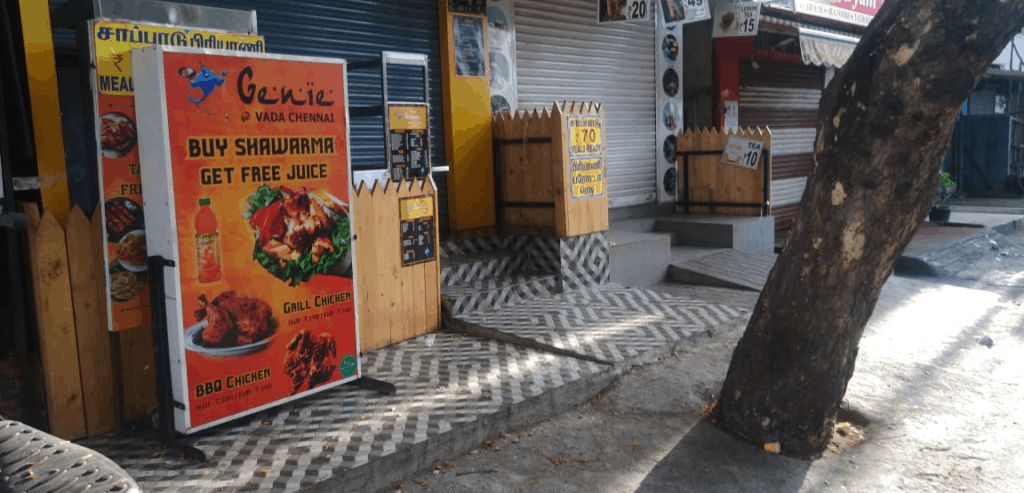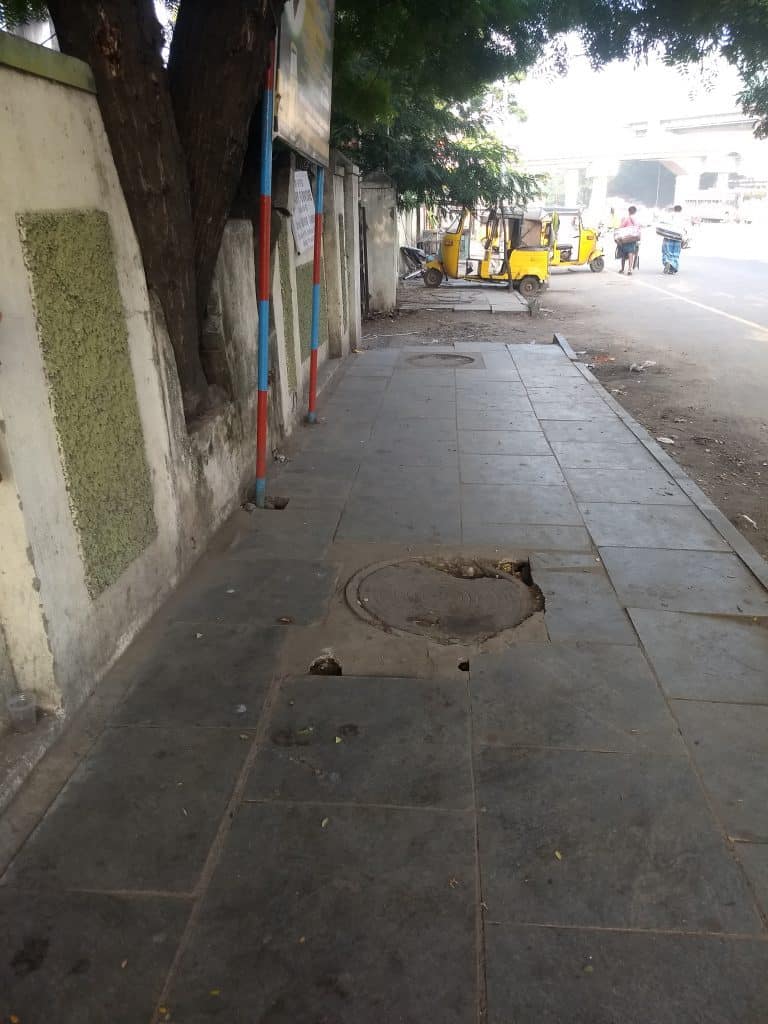Poor quality roads, with stretches of potholes and uneven patchwork are a common sight in Chennai. Newly-laid roads are often dug up by government agencies shortly after. As a result, complaints pertaining to fixing roads take longer than needed as authorities perpetually shift the blame to other departments. This stems from the fact that citizens are generally unaware of the technicalities involved in laying roads in Chennai.
Here is an explainer on the kind of roads laid in Chennai, where to complain about them, how we can escalate matters and how citizens can keep a watch.
Chennai roads and the role of the Corporation
There are two categories of roads that fall under the purview of the Greater Chennai Corporation (GCC):
- Bus Route Roads (BRR): These are the roads that carry buses and all other vehicles, ranging from two wheeler to heavy vehicles in the city. Some of the examples are Kamarajar Salai, RK Salai, Velachery Main Road (until Taramani Road), Sardar Patel Road and the likes. There are 471 BRR in the city with a total length of 387-km.
- Interior roads: All other roads that do not fall under BRR are categorised as interior roads.
The department is entrusted with the following duties:
- Capital works that include relaying of Bus Route Roads, traffic improvement works like widening of roads, formation of footpaths, traffic island, construction of centre median with granite, grill, restoration of road cuts, setting up bus shelters and street furniture.
- Granting permission for Optical Fiber Cable (OFC) companies for laying optic fibre cable, according to rules and regulations by collecting relevant track rent and restoration charges from firms.
- The department also looks after the legal affairs, RTI, writ and ordinary petitions and complaints with respect to roads.
While these are the two types of roads categorised and managed by the corporation, there are other government agencies that are caretakers of specific categories of roads in Chennai. State highways, national highways, Tamil Nadu Road Development Company (TNRDC), Industrial Estate Manufacturers’ Association (IEMA), Guindy, Ambattur Industrial Estate Manufacturers’ Association (AIEMA) and Tamil Nadu Slum Clearance Board (TNSCB) are the other nodal agencies for some roads in the city.
Read more: RTI data reveals that only 34% of Chennai roads are flood proof
What are the components of a good road?
A good road is characterized by the following parameters:
- Roads that go up and down aka undulated roads
- No potholes
- Road cuts should be attended immediately
- No road damages
- Smooth riding surface
- Proper gradient — camber (where a slope is added for water drainage from the road) or super elevation (where you raise the outer edge of the road along the curve to counteract the effect of centrifugal force) — this helps prevent waterlogging
- Presence of Storm Water Drains (SWD) to ensure water is drained soon after the rains
- Proper segregation of traffic in terms of 2 wheelers, 4 wheelers and heavy vehicles
- Dedicated parking space wherever required
- Setting-up bus stops 150-metre away from junctions
- Presence of footpaths
- Encroachment-free roads

How are roads laid?
The layers of roads are determined by the quality of soil for up to 500 metre from the top layer. To understand the soil quality, the BRR department conducts a California Bearing Ratio (CBR) test. This is a penetration test that evaluates the subgrade strength (the layer present underneath the top layer of roads) and the base of roads and pavements. The results are analysed to determine the thickness of the pavement and its component layers.
“Based on the CBR value, we assess if the road needs Dense Bituminous Macadam (DBM), a binder course used for roads with more heavy commercial vehicles, or just Bituminous Concrete (BC),” a senior official from the civic body says.
Repaired today, dug up tomorrow: Here’s why
For making any road cuts in BRR or interior roads, any agency is mandated to get clearance from the Greater Chennai Corporation after remitting the necessary road cut restoration charges. One of the most serious issues that the corporation encounters is the frequent road cuts made by several service departments such as Chennai Metropolitan Water Supply and Sewerage Board (CMWSSB), Tamil Nadu Electricity Board (TNEB) and private communication providers, among others.
For instance, the north side of Perambur High Road was resurfaced after the roads were milled early this year, where a rotating tool was used to cut into surfaces. Residents say that the road was dug up by CMWSSB contractors a few days ago, to raise the height of the sewage manhole chambers.
“Lack of coordination between the corporation and metrowater agency is a matter of serious concern. The manhole chambers have not been fixed properly,” says Raghukumar Choodamani, an activist from Perambur.
Read more: The citizen’s guide to dealing with ad hoc digging of roads in Chennai
When are roads relaid?
Roads laid three or more years ago are considered for relaying. If recently laid roads are damaged, the zone-level engineers should seek special permission from DC (Works) or Regional Deputy Commissioner (RDC). Following which, a detailed project report (DPR) will be prepared and a series of tests will be done. Then, tenders will be called for and granted to complete the work.
According to a recent order issued by the Chief Secretary of Tamil Nadu to the Highways department, milling of roads has been made mandatory while carrying out the relaying activity. This is done to ensure that the height of the road does not increase and to safeguard from flooding. The order also adds that the milling process should align with Indian Road Congress Rule 37 which details guidelines for the Design of Flexible Pavements.
The civic body official clarifies that BRR roads should be milled to a depth of 40-mm, interior roads should be milled up to 30-mm deep.
Patchwork is recommended for filling potholes on roads. But in Thiruvengadam Street, Perambur, the civic body is resurfacing the roads to cover up the damaged portions. “The height of the road has already been increased significantly. Some residents have to descend two steps below the height of the road to enter their homes as the road is not milled. We do not want the entire stretch of the roads to be totally resurfaced; what we need is quality patchwork” adds Raghukumar.
Although the rules call for milling of roads before relaying, the guidelines are flouted during execution. It is important for citizens to keep a watch when roads are relaid.
Where can you complain about road issues?
GCC is working on a dashboard which will have details of the projects executed by the civic body ranging from relaying roads to construction of flyovers. Citizens can then check the live updates on the dashboard.
Residents can lodge a complaint by dialling 1913 or through Namma Chennai application. The corporation has set timelines to fix the complaints. They are as mentioned below:
| Nature of complaints | Timeline |
|---|---|
| Filling potholes, road cuts | 2 days |
| Patch repairs (Footpath Centre Median) | 1 week |
| Removal of obstruction on roads | one working day |
| Replacement of SWD chamber covers | one working day |
| Removal of debris from public land by owner | Notice to the owner within 2 days |
| Removal of debris by Chennai Corporation if the owner fails to comply with notice | One week after issue of notice (cost will be recovered from owner) |
Across the city, quality of roads is a primary concern and the issues range from encroachment of pavements to frequent road cuts to potholes.
While the civic body encourages lodging complaints, former vice president of Indian Road Congress and former Chief Engineer of Highways Department, A Samuel E Jebarajan, calls for a top to bottom approach.
“Regular meetings should be conducted at divisional level to identify problems related to roads, encroachments and fix them by appointing a special committee headed by an IAS officer,” he says.
(Technical inputs from former vice president of Indian Road Congress and former Chief Engineer of Highways Department, A Samuel E Jebarajan and a senior official from the Greater Chennai Corporation)

Here is an update on the situation with Thiruvengadam Street in Perambur. Subsequent to the grievance petition filed, the local AE spoke to me yesterday morning and has confirmed that our request for a quality patch work of the concrete road has been considered and they will be recovering the cost from CMWSSB towards the same.
By engaging directly with the concerned officials, escalating the grievances to the higher authorities and reporting it through Citizen Matters we have managed to resolve several issues of public interest effectively.
Urge fellow residents to use these forums extensively.
A very exhaustive article. The question is, does the GCC lay the roads as per the laid down procedures? If it were so,how does the road level go up? At places where the road level has gone up due to GCC relaying over and above surface without milling,if if there are no storm water drains or if the are dysfunctional, the water from the road will flow into nearby apartments causing inundation. In T Nagar many apartments, which were constructed decades ago,face this situation during rainy seasons. Despite specific complaints, there has been no respite